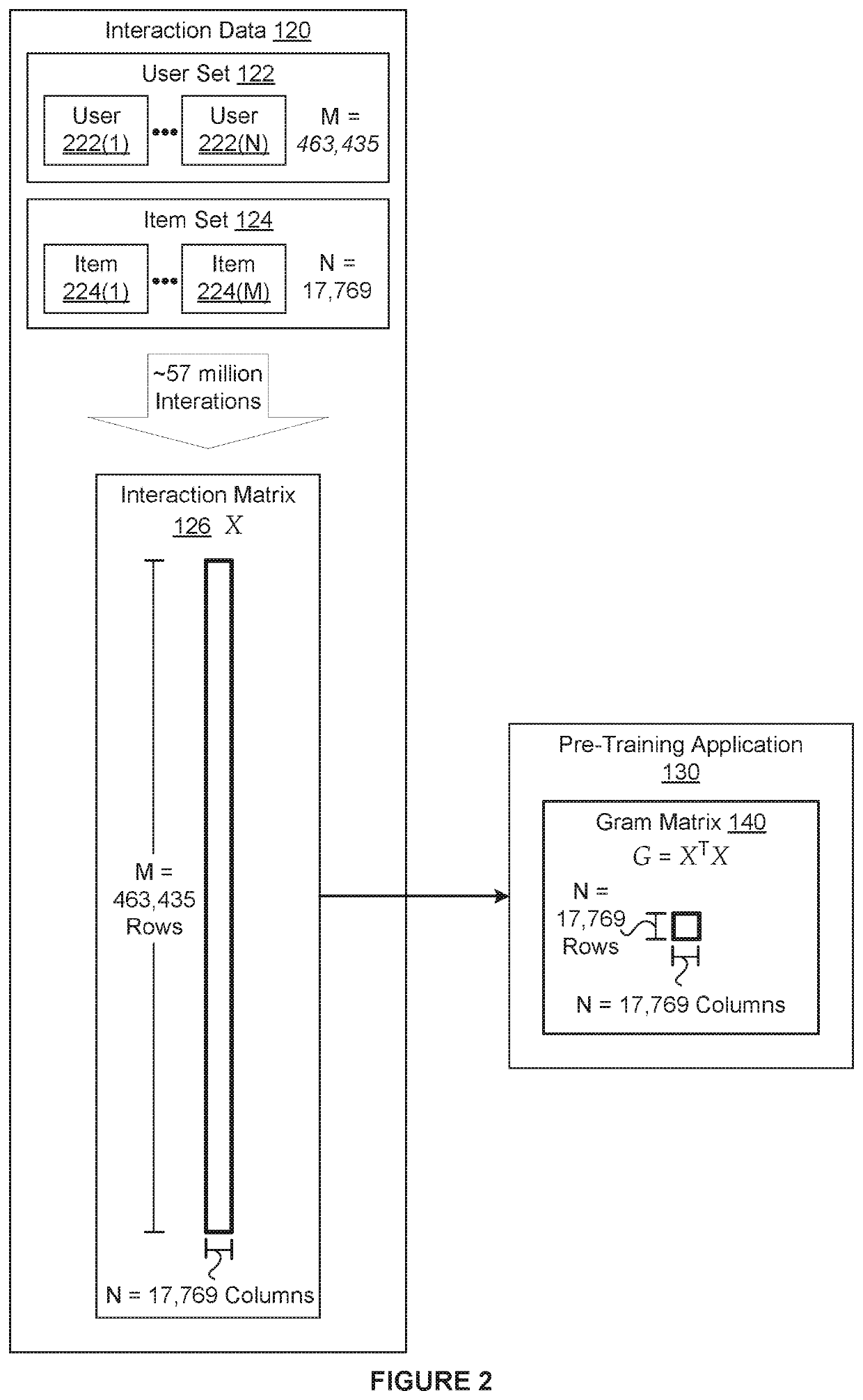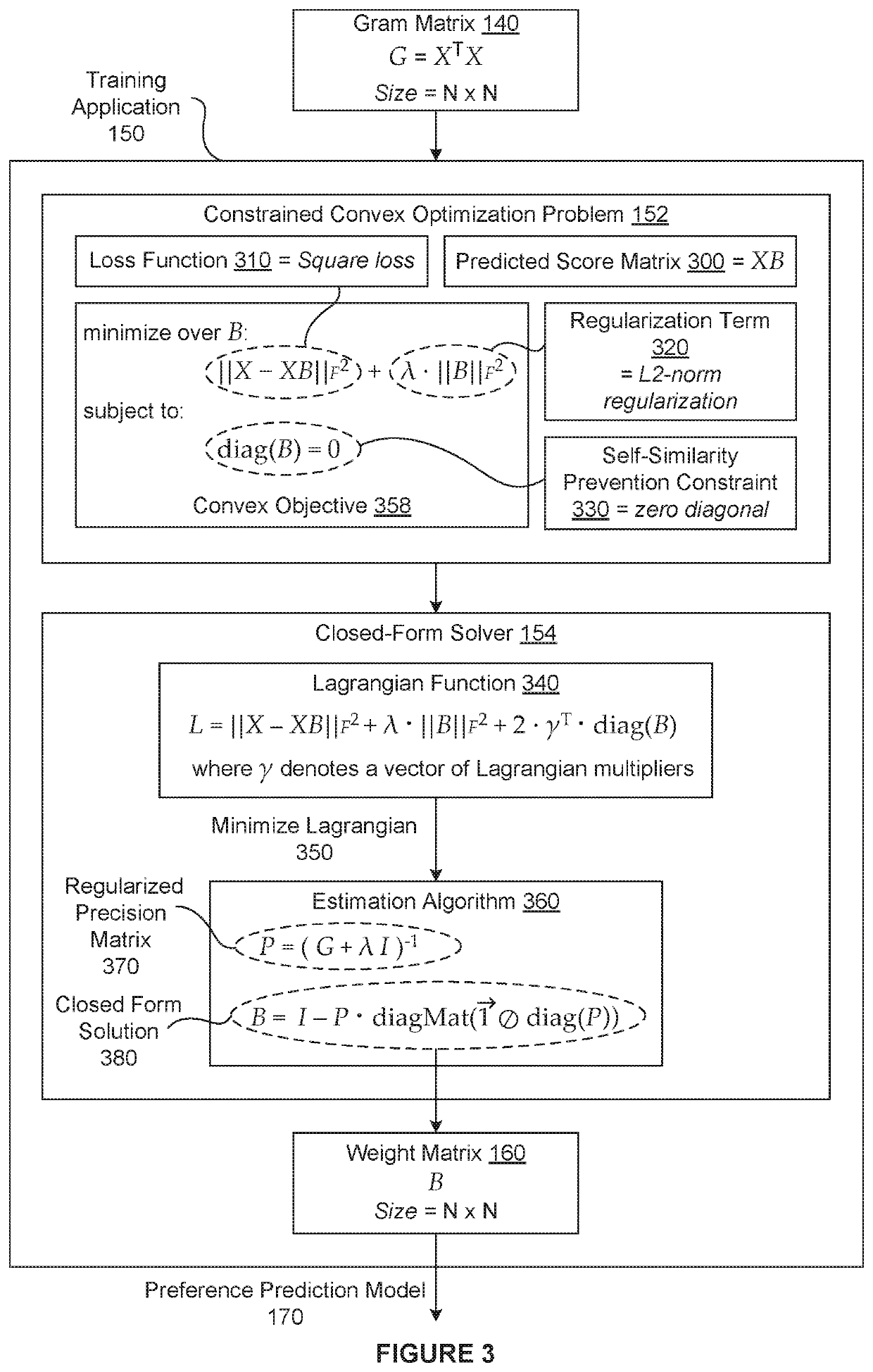Techniques for recommending items to users
a recommendation network and recommendation algorithm technology, applied in the field of computer science and recommendation systems, can solve the problems of reducing the accuracy of requiring numerous processor hours to train the recommendation deep neural network, and reducing so as to reduce the time and processing resources required for training, and accurately predict the preferences of users.
- Summary
- Abstract
- Description
- Claims
- Application Information
AI Technical Summary
Benefits of technology
Problems solved by technology
Method used
Image
Examples
Embodiment Construction
[0002]Embodiments relate generally to computer science and recommendation systems and, more specifically, to techniques for recommending items to users.
DESCRIPTION OF THE RELATED ART
[0003]Recommendation systems are designed to predict and display items that are most likely to be of interest to users. These types of systems are used in many different contexts. For instance, recommendation systems are used by media services to help users decide which media items in a media catalog to watch. Recommendation systems also are used by on-line retailers to suggest various items to users to entice the users to purchase those items. Many recommendation systems generate recommendations using collaborative filtering recommendation models that predict the preferences of users for items based on the historical preferences of those users and / or other users for the same and / or similar items. In some recommendation systems, each historical preference is a Boolean that indicates whether a user has in...
PUM
 Login to View More
Login to View More Abstract
Description
Claims
Application Information
 Login to View More
Login to View More - R&D
- Intellectual Property
- Life Sciences
- Materials
- Tech Scout
- Unparalleled Data Quality
- Higher Quality Content
- 60% Fewer Hallucinations
Browse by: Latest US Patents, China's latest patents, Technical Efficacy Thesaurus, Application Domain, Technology Topic, Popular Technical Reports.
© 2025 PatSnap. All rights reserved.Legal|Privacy policy|Modern Slavery Act Transparency Statement|Sitemap|About US| Contact US: help@patsnap.com



